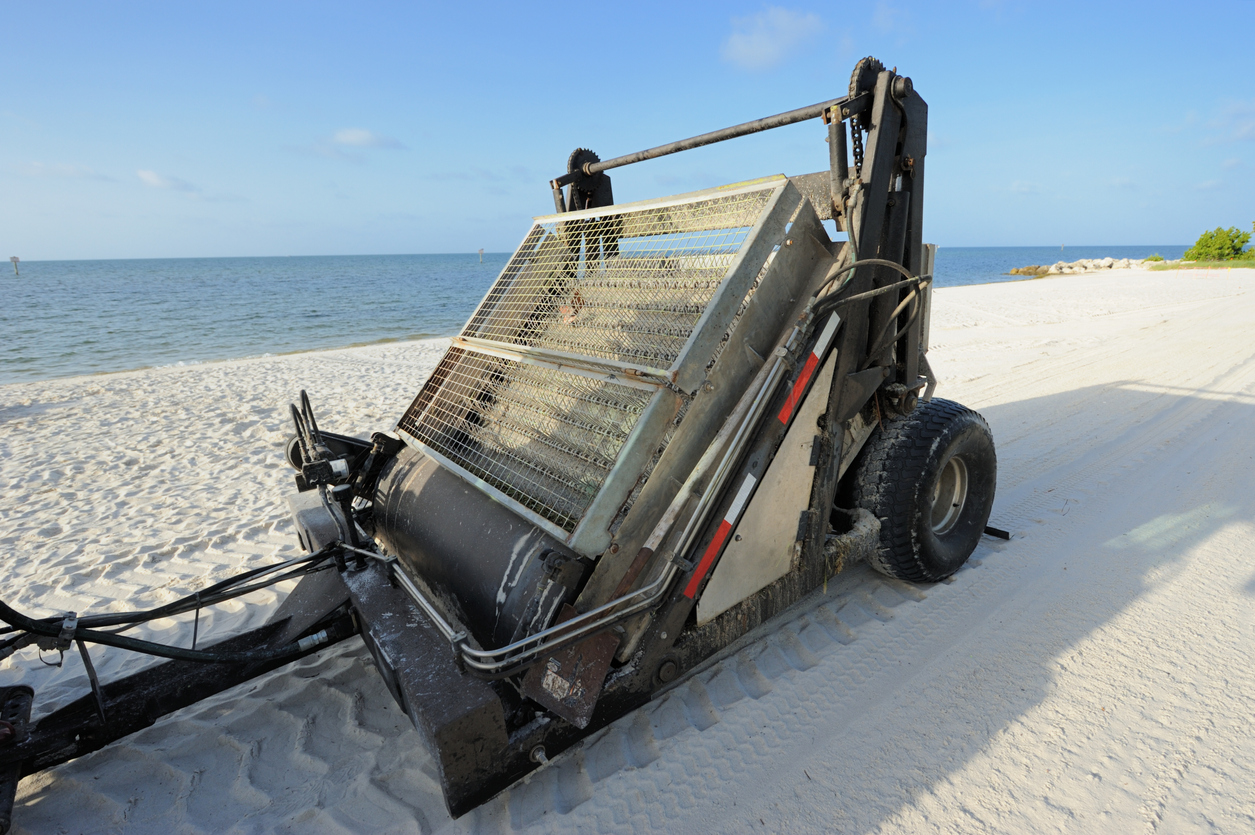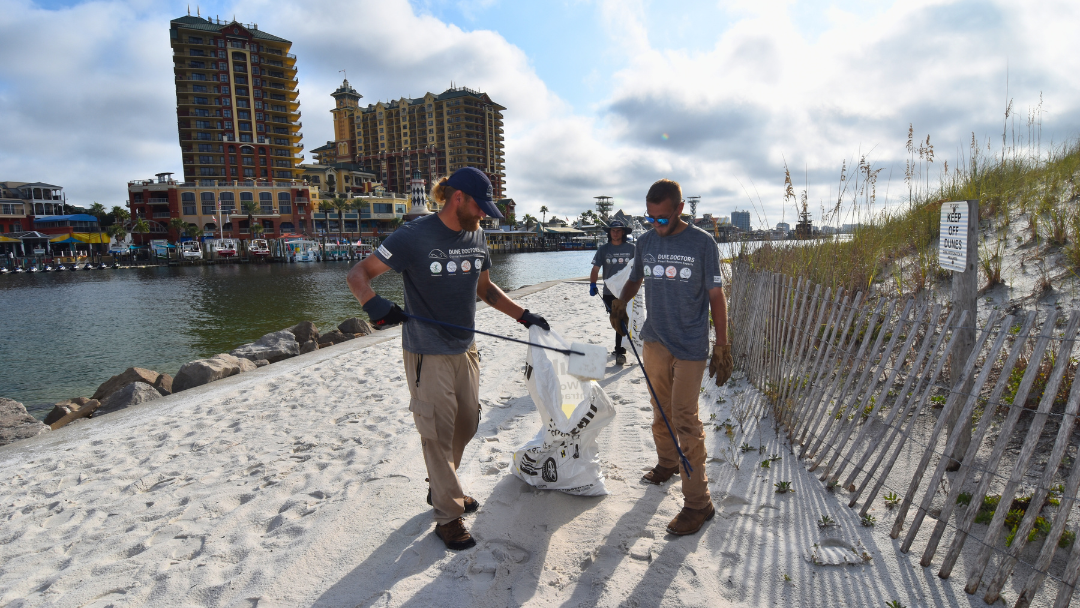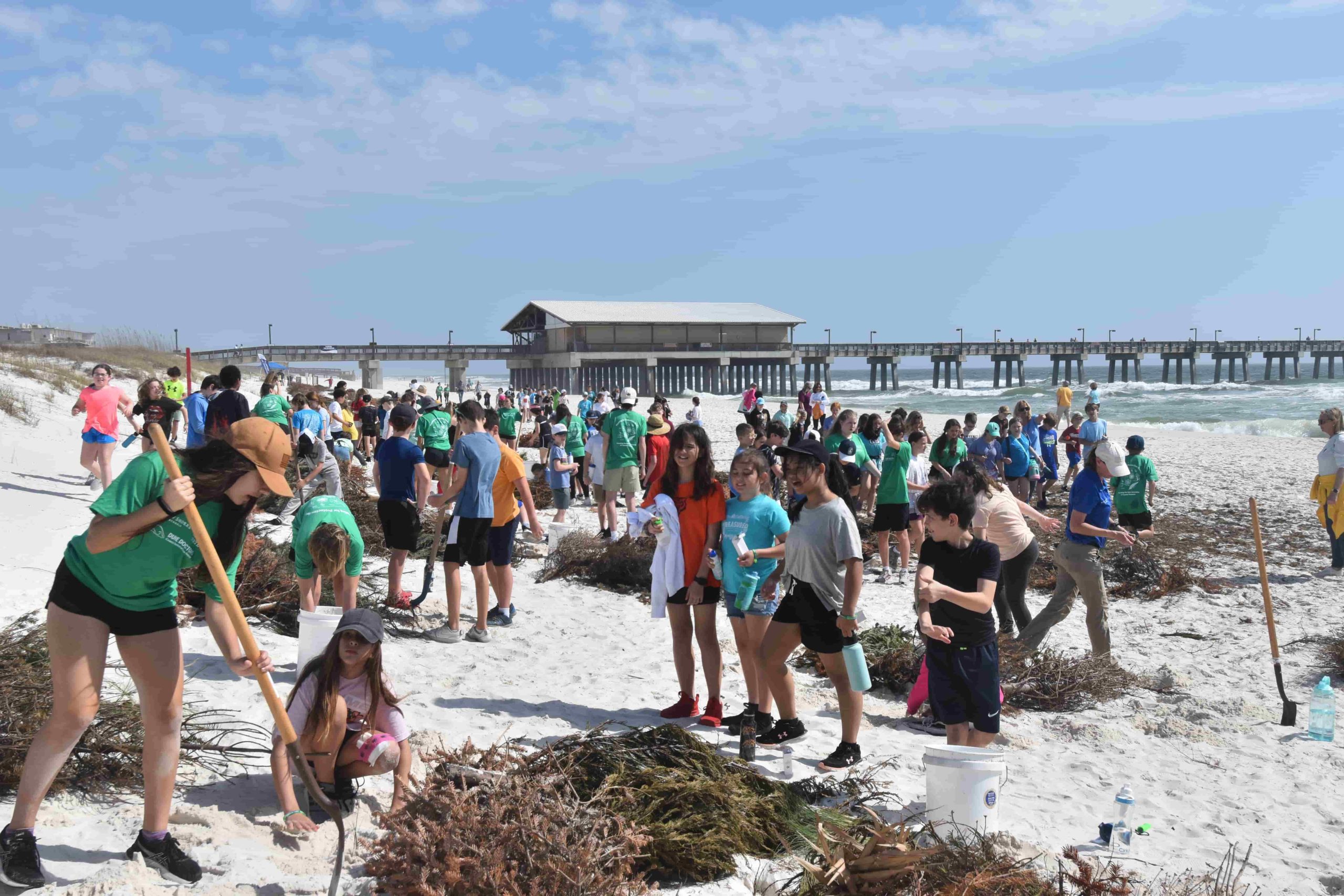From blue whales to microscopic organisms, every living thing on earth must eat to survive. Coastal plants are no exception! It is common knowledge that plants first need air, water, and sunlight. But, for sea oats to access the water deep within the dunes, they need a deep root system. Strong root system development requires an adequate nutrient source. Sand is generally a nutrient-poor soil. Whether the sand can naturally provide vital nutrients to the vegetation depends partly on the sand’s composition, which varies by location. Sometimes, to encourage the development of healthy dune vegetation, special fertilizer needs to be applied to the soil.
How Does Sand Composition Vary Along the Gulf Coast?
From a nutrient standpoint, Texas’ beaches boast ideal sand composition because two sources readily provide new sediment and nutrients to its coastline: the Mississippi River and in-state rivers. The World Ocean Review, an international publication of oceanographic science reports, states that the Mississippi River empties vast amounts of sediments and nutrients into the Gulf of Mexico and wind carries the content westward along the shoreline. In addition to the silt from the Mississippi, according to the American Geological Society, Texas has different primary in-state rivers that deliver a “distinct suite of heavy minerals” to the coast. These diverse sediment sources are what make Texas sand a very rich soil with nutrients easily accessed by the coastal plants’ roots.
At the direct opposite end of the nutrient spectrum are the beaches located to the east of the Mississippi. The sand along the eastern shoreline of the Gulf Coast is known throughout the world for its aesthetic qualities white, soft, and pristine. This “sugar-white” sand is primarily composed of quartz crystal a mineral resistant to chemical and physical weathering. However, the University of Florida states that, unlike Texan sand, the quartz particles present on the shoreline do not “hold water or nutrients very well.” Nutrients cannot chelate to the smooth quartz particles. Texas beaches do not require fertilization, but beaches mainly comprised of quartz do. The fertilizer, however, needs to be specifically tailored to the needs of the plants that grow on the dunes and designed to function with quartz sand.
Where Does White Sand Come From?

The generally-accepted theory is that the quartz, located on the gulf coast, arrived there through extensive erosion of the rock formations from the Appalachian Mountains. Rivers carried inland sediments into the Atlantic Ocean and the Gulf of Mexico. However, over time, the large rivers shifted, cutting off the supply of new sand to a large section of the Gulf Coast. The continual churning motion of the tide and chemical reactions in the water eroded all of the weaker minerals and only crystal quartz remained on these beaches. In an interview in 2017, Stephen Leatherman a geologist and coastal scientist, explained that Florida’s beaches reached an “ecological equilibrium” when the quartz weathered down to its “terminal size” and became “trapped by the action of the waves.” The crystal quartz gives the sand a white color and sugar-like consistency. In combination with the sunlight, the sand reflects through the water giving waves the beautiful emerald color for which the quartz-comprised beaches are known.
How Does Beach Raking Impact Sea Oats?

While these pristine beaches are incredibly relaxing to look at, their composition makes it difficult for plants to grow. One of Mother Nature’s methods of fertilizing coastal plants is by routinely depositing seaweed on the coast. According to a dune management guide put out by the Department of Environmental Resources Management of Palm Beach County, seaweed “creates a nutrient-rich organic layer” that feeds the animals and plants that live on the shore. However, to both prevent the unpleasant aroma of decomposing seaweed and return the beaches to their pristine condition, humans routinely remove the deposited seaweed before it has a chance to decay. This process is called beach raking and is part of why the fertilization of the sea oats becomes a vital part of maintaining healthy dunes.
When Should You Fertilize Sea Oats?
When growing in nutrient-poor conditions, two other situations contribute to the sea oats’ need for fertilization—the initial planting and the process of dethatching. Both circumstances are stressful to sea oats as both instances see plants with shallow root systems. Dethatching is the process by which thatch is removed from the base of the plants. Thatch is an accumulation of dead/spent organic material, which is detrimental to sea oats because it holds moisture at the surface of the sand. This causes the plant to develop a shallow root system that will not adequately anchor the plant to the dune. It may also cause the plant to rot as the thatch layer encourages an environment prone to disease development.
Once the thatch is removed, water availability is no longer shallow, and the plant’s root system needs to be encouraged to grow deeper in the soil in search of a new water source. Slow-release fertilizer provides the nutrients necessary for the plant to develop a strong network of webbed roots to find water and to anchor the dunes in place. This specific fertilizer helps the plant achieve this growth by delivering small amounts of nutrients in the soil over time. A publication on dune restoration by North Carolina State University warns against excess fertilization, stating that it may “damage the development” of the plants and “increase the occurrence of plant diseases.” The fertilizer will be best absorbed during the growing season. We recommend one application of fertilizer in late Spring and one in late summer/early fall. Because of their deep, web-like root system, sea oats are of paramount importance in the building and maintaining of sand dunes. For this reason, sea oats are federally protected due to their integral role in dune preservation.
What Kind of Fertilizer Do Sea Oats Need?
Fertilizers, as a plant growth enhancer, vary in purpose. They are formulated to focus on one (or more) of four distinct functions within plants. Certain formulas strengthen the roots or create denser foliage, while others encourage flower production and fruit yield. When the goal is to strengthen a dune system, the primary purpose of the fertilizer should be to help the plants develop strong, deep roots. The fertilizer applied should be slow releasing and specific for sea oats. For these reasons, applying a general fertilizer (intended for gardens) on the dunes can be extremely detrimental to the health of the fragile dune ecosystem. These all-purpose fertilizers may create the illusion of a healthy environment because the plants above the ground look thriving. Still, below the ground, the root systems are weak and debilitated. Avoid creating environmental hazards by entrusting professionals who have extensive knowledge in this domain to fertilize your dune system.
Strong root systems = Resilient Dunes.
Sources:
Broome, Stephen. “Restoration and Management of Coastal Dune Vegetation | NC State Extension Publications.” Restoration and Management of Coastal Dune Vegetation | NC State Extension Publications, content.ces.ncsu.edu/restoration-and-management-of-coastal-dune-vegetation.
Bullard, Fred M. “Source of Beach and River Sands on Gulf Coast of Texas.” GSA Bulletin, GeoScienceWorld, 1 July 1942, pubs.geoscienceworld.org/gsa/gsabulletin/article-abstract/53/7/1021/3939/source-of-beach-and-river-sands-on-gulf-coast-of?redirectedFrom=fulltext.
Palm Beach County Board of County Commissioners. Guidelines for Beach & Dune Management. Guidelines for Beach & Dune Management, discover.pbcgov.org/erm/Publications/BeachandDuneManagement.pdf.
Ronson, Jacqueline. “The Best Sand on Earth Is This, According to Dr. Beach.” Inverse, www.inverse.com/article/32767-best-beach-sand-fine-white-quartz-crystal-siesta-florida.
“The Mississippi River and the Gulf of Mexico Dead Zone « World Ocean Review.” World Ocean Review, worldoceanreview.com/en/wor-1/pollution/over-fertilization/the-mississippi-river-and-the-gulf-of-mexico-dead-zone/.
“Working in Your Florida Soil.” Working in Your Florida Soil – Gardening Solutions – University of Florida, Institute of Food and Agricultural Sciences, gardeningsolutions.ifas.ufl.edu/care/planting/florida-soil.html.






